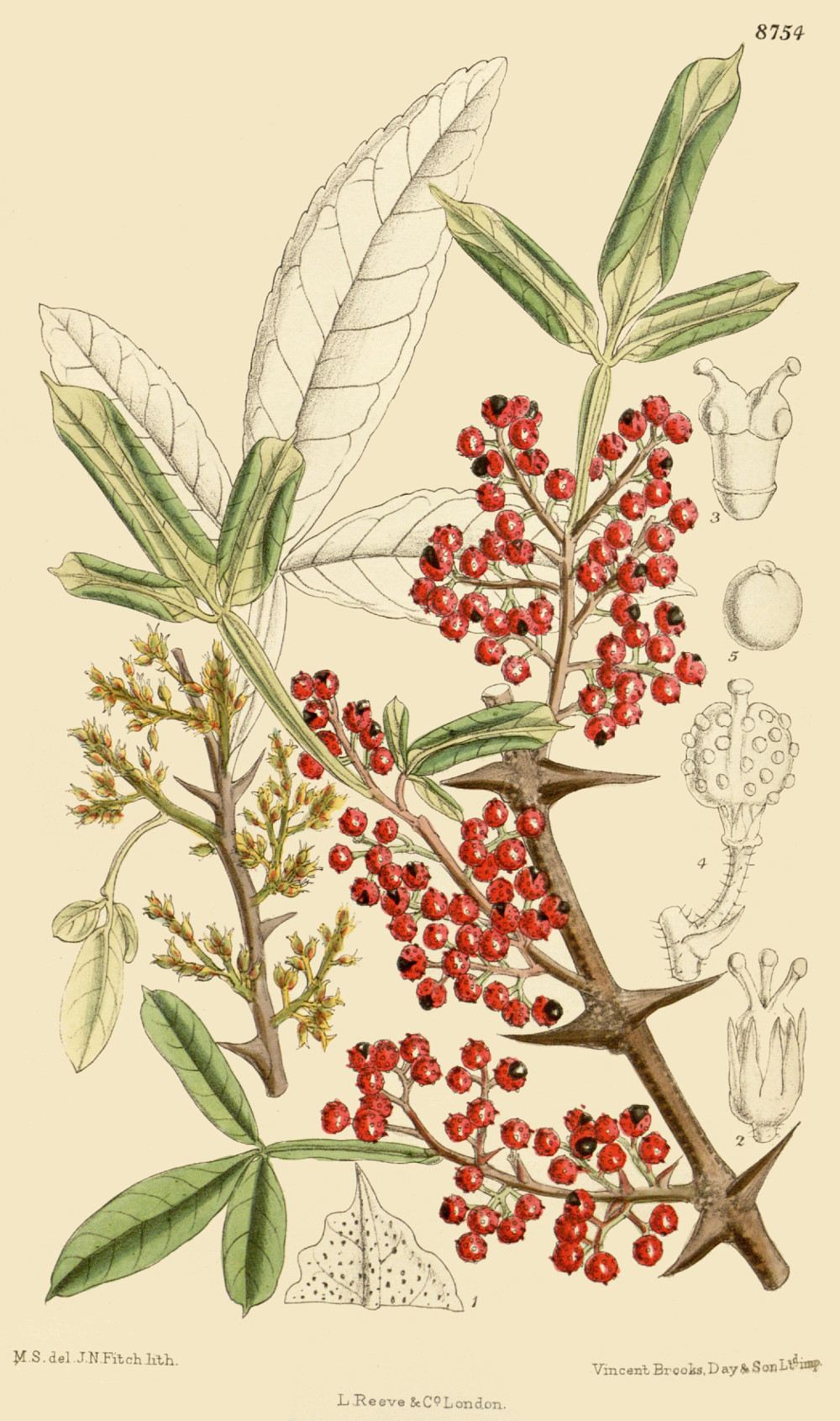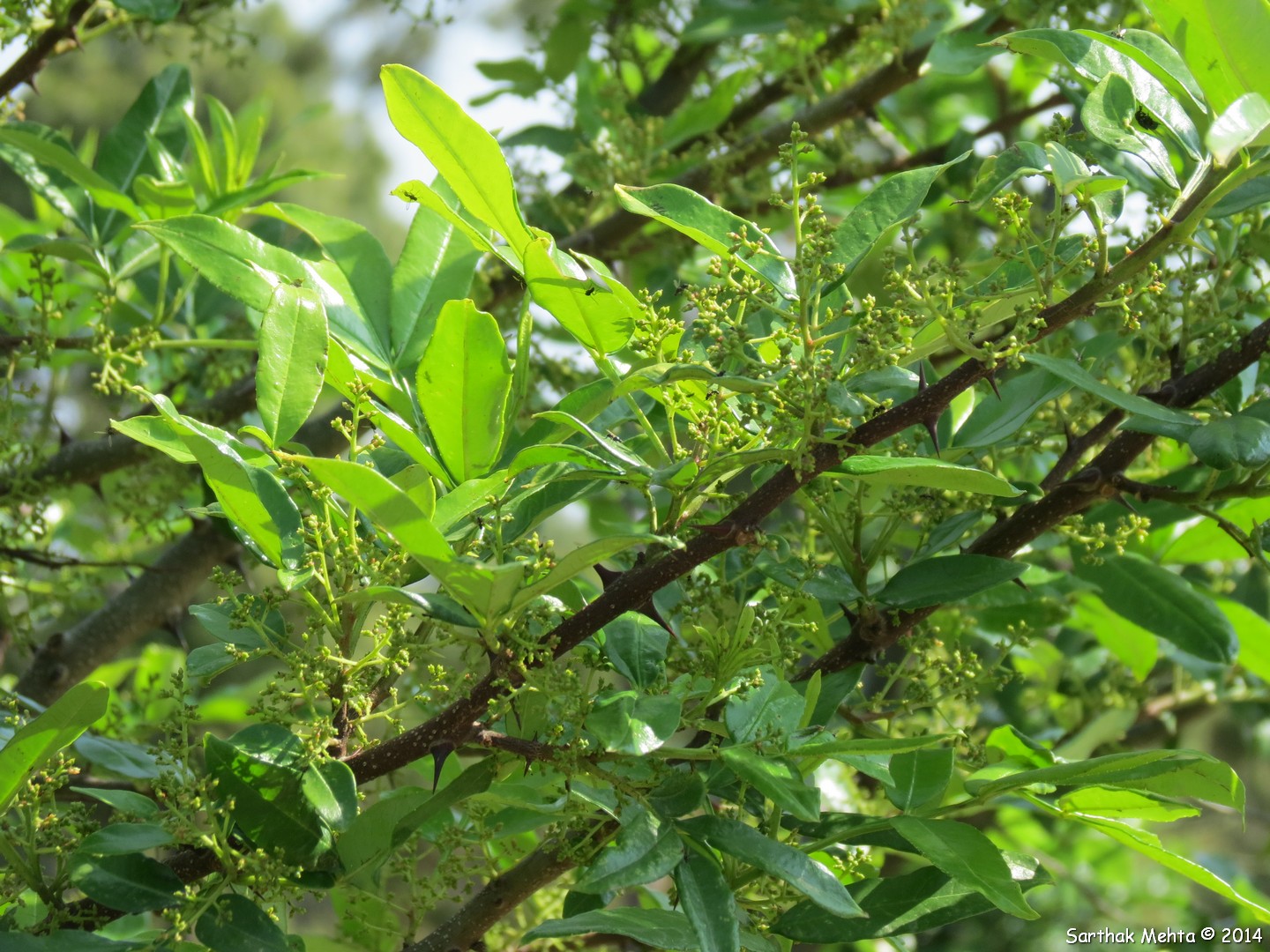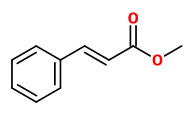Benutzer-Werkzeuge
Zanthoxylum armatum DC. - syn.Zanthoxylum alatum Roxb.; Zanthoxylum planispinum Siebold & Zucc. - Rutaceae
winged prickly-ash, toothache tree, timar (hindi), टिमुर timur (nepali), 竹叶花椒 zhu ye hua jiao (chin.), Timur pepper, Timur Pfeffer
Deciduous shrub or small tree, up to 5m high, native to Asia (India, Nepal, China, Korea, Japan, Vietnam, Indonesia, Philippines); branchlets with prickles; leaves alternate, odd-pinnate, up to 20 cm long, with 3-9 leaflets and a winged rachis; leaflet blades subsessile, opposite, ovate to lanceolate, up to 15cm long; flowers in small axillary panicles, yellowish; fruit rounded, warty, purplish-red, 4-5 mm across; seeds blackish brown, 3-4 mm in diam.
https://npgsweb.ars-grin.gov/gringlobal/taxonomydetail.aspx?403185
http://www.efloras.org/florataxon.aspx?flora_id=2&taxon_id=242355514
https://www.gbif.org/species/7716390
The hydrodistilled oil of the seeds (yield 1.3%) had linalool (57%) as the major component. Further main compounds were limonene (19.8%), (E)-methyl cinnamate (5.7%), (E)-carveol (2.6%), terpinen-4-ol (2.3%), myrcene (1.3%), α-terpineol (1.1%), phellandral (1.3%), (Z)-linalool oxide (0.8%), (E)-linalool oxide (1.0%), and (E)-nerolidol (0.6%).
[Tiwary, Mohini, et al. „Chemical composition and larvicidal activities of the essential oil of Zanthoxylum armatum DC (Rutaceae) against three mosquito vectors.“ Journal of vector borne diseases 44.3 (2007), 198-204] http://www.mrcindia.org/journal/issues/443198.pdf
„Zanthoxylum armatum DC. (Family Rutaceace), also known as Toothache tree occupies an important place in the
history of Indian system of medicines. It is used as carminative, stomachic and anthelmintic and in the treatment of toothache. It contains volatile oil with active constituents such as linalool, limonene and lignan. Various studies indicated that it possesses antilarvicidal, antifungal, hepatoprotective and allelopathic properties.“
[Singh, Thokchom Prasanta, and Okram Mukherjee Singh. „Phytochemical and pharmacological profile of Zanthoxylum armatum DC.-an overview.“ Indian Journal of Natural Products and Resources Vol.2 (3), 2011, 275-285] http://nopr.niscair.res.in/bitstream/123456789/12730/1/IJNPR%202%283%29%20275-285.pdf
Main components of commercial fruit oils were linalool (44.2-57.9%), limonene (15.4-21.7%), β-phellandrene (6.1-14.1%), and methyl cinnamate (7.6-10.4%).
"Xanthoxylum Essential Oil" aromatics.com GC-MS provided, retrieved 2017-11-27.
„Essential oils and CO2 extracts of Timur (Zanthoxylum armatum DC syn. Zanthoxylum alatum Hemsl.) from fruits cropped in the Nepalese districts Surkhet, Jajarkot and Salyan from 2012 to 2015 were analysed to explain their typical odour and characterize their volatile profile. Best extraction conditions to ensure the right balance of the terpenic fresh notes compared with the sulphury fruity character were obtained with milled fruits and CO2 extraction. Volatile composition allowed supplying zones discrimination. Among more than 130 volatile constituents, identified by GC-MS and quantified by GC-FID with the use of predicted relative response factors, only 20 were found to have an odour impact by GC-O using a hybrid methodology between detection frequency and time intensity methods. Limonene, α-pinene and myrcene explain the terpenic notes. Linalool, citronellal, 6-methyl heptanal and octanal bring the fatty and aldehydic tone. The spicy facet is linked to (E)-methyl cinnamate and (Z)-ethyl cinnamate. 4-mercapto-4-methylpentan-2-one, 3-mercaptohexanol, 3-mercaptohexyl acetate and 1-p-menthene-8-thiol are the key olfactive constituents contributing to the typical tropical and grapefruit odours. Their presence was confirmed using the stable isotope dilution assay and reported for the first time in Timur.“
[Cicchetti, Esméralda, et al. „Characterization of odour‐active compounds in Timur (Zanthoxylum armatum DC.) fruits from Nepal.“ Flavour and Fragrance Journal 32.5 (2017): 317-329]

Zanthoxylum armatum DC. as Zanthoxylum planispinum Siebold & Zucc.
Curtis’s Botanical Magazine, t.8742-8785, vol.144 [ser.4, vol.14] t.8754 (1918) [M.Smith]
http://botanicalillustrations.org/species.php?id_species=1080626

Zanthoxylum armatum DC, Khetikhan, Uttarakhand 262524, India CC BY-SA 3.0, Author: Sarthak Mehta (2014)
http://indiabiodiversity.org/observation/show/346758?species%3DZanthoxylum%20armatum%20DC.



